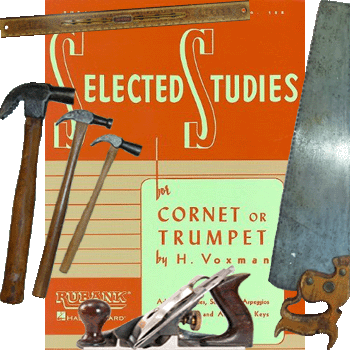|
Below is information on Himie Voxman's Selected Studies. In addition to some basic notes on performance, each entry includes a rendition of the etude as performed by Drew Fennell. Students may use these demonstrations as a model for preparation of lesson material. More content will be added over time.
Etude #20 (page 23, B minor)
Demonstration
This etude should be relatively fast. Try for a tempo in the range of quarter note = 100 to 116. The marking is sempre staccato, and the sixteenth notes should be short, but take care not to close off the ends of the notes: "tut, tut, tut, tut," etc. The proper sound should be more like this: "tah, tah, tah, tah," etc. Listen to a demonstration of this.
- Allegretto [It.]: Slightly slower than Allegro; medium fast.
- Sempre [It.]: Always.
- Staccato [It.]: Separated, detached.
Etude #21 (page 24, Eb Major)
Demonstration
The tempo of the etude should range between dotted quarter = 68 to 76. Any time a longer note is followed by shorter notes, the player should make a point to subdivide the long note by the same value as the shorter following notes. See the example below, taken directly from the etude (measure 7). This subdivision helps the musician both to keep momentum through the longer note and to ensure that the rhythm coming out of the longer note is accurate.
- Adagio [It.]: Slightly slower than allegro; medium fast.
- Cantabile [It.]: ASingable, songlike.
- Rallentando [It.]: Slowing down.
- A tempo [It.]: Return to the original tempo after some deviation from it.
return to Workshop Home
top of page
Copyright © 2003, 2004, 2005, 2006, 2007, 2008, 2009, 2010 Drew Fennell
International Copyright Secured All Rights Reserved
|

